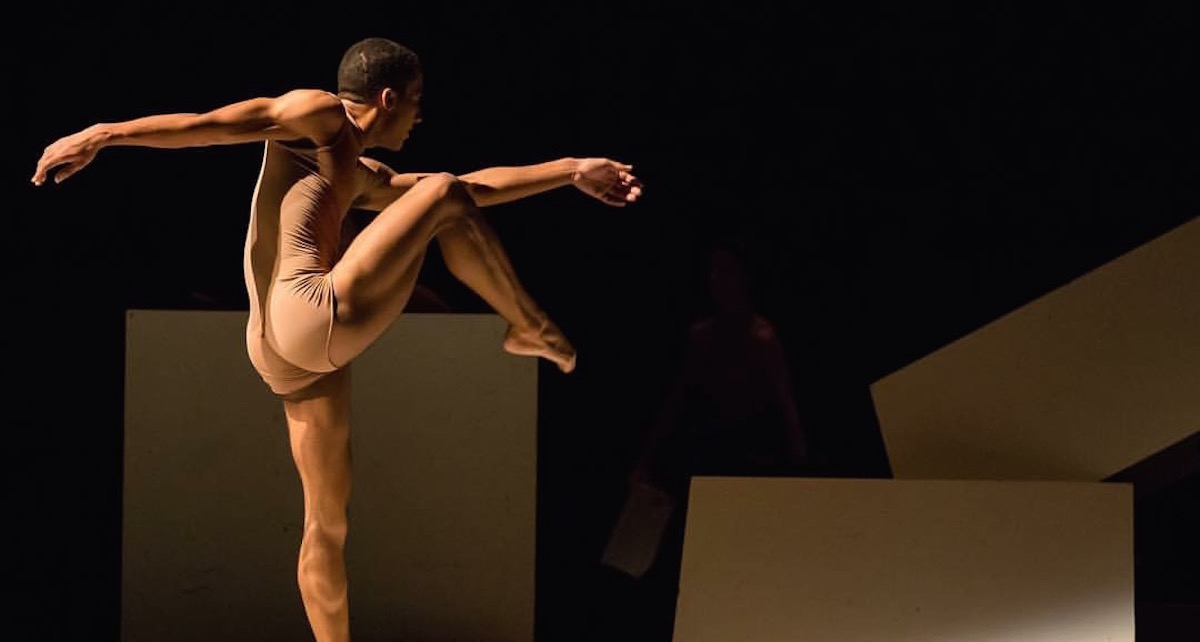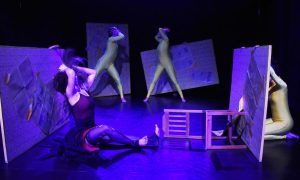Houston Ballet Demi Soloist Harper Watters is a young force to be reckoned with. Watters is not only a beautiful ballet dancer but also is in charge of Instagram and other social media outlets for the Houston Ballet. Here, he opens up about why social media is important in the dance world today, about his hobbies and his dream dance roles.
Tell me a bit about your background. Where did you grow up? When did you begin dancing?
“I grew up in Dover, NH. I was originally born in Atlanta, GA, but was adopted at two weeks. I’d like to think extreme potential was the reason I was put in local dance classes, but I’m pretty sure it was because my parents couldn’t stand watching my one-man Nutcracker I choreographed anymore. I joined a competition dance studio at age 11, and I credit it for providing me with the fundamentals of dance training. I attended the Walnut Hill School for the Arts for my sophomore and junior year, and then joined the Houston Ballet second company in 2009.”
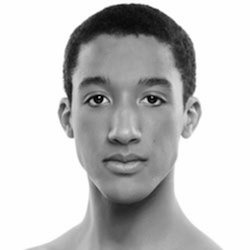
Harper Watters. Photo by Amitava Sarkar.
When did you join the Houston Ballet?
“After training for two years as a member of the Houston Ballet second company, I joined Houston Ballet in 2011 as an apprentice. I got promoted to corps in 2012 and recently to demi soloist in September of 2016.”
What is your favorite aspect of being a ballet dancer?
“As a dancer, you can never press enter to get your results, there’s no exact equation to deliver a final product. It requires patience, determination, cooperation and vulnerability. It’s the process of constantly having to set goals and test myself that I enjoy most about being a dancer. Every day, we’re faced with unique challenges. Whether it’s focusing on the difficult step of the variation, working with a new choreographer on a world premiere or connecting with a character or a new partner. The uncertainty of what challenges we are to face being around the corner is incredible, though somewhat nerve-racking and equally satisfying. I’m constantly left with a sense of accomplishment and a motivation to push myself for more in the future.”
What is the most challenging part of being a ballet dancer?
“The exact reason why I love being a dancer is also the most difficult. It’s confronting every emotion you face during the process, which always presents the most challenges. At the start of my career, it was always much easier to say, ‘I can’t’, than to take the risk and say, ‘I’ll try’. However, as I got older, rehearsed more ballets and performed more roles, I learned that when I took risks I grew so much more as an artist. I’m still guilty of getting frustrated when a tricky lift doesn’t work out or I didn’t execute the steps on stage like I did in rehearsal, but learning how to handle set backs and grow from each experience is so vital to being a successful dancer.”
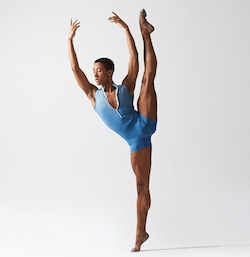
Harper Watters. Photo by Rachel Neville.
In addition to being a ballet dancer, you also run the social media for the Houston Ballet. How did that come about? Were you hired, or did you offer to help?
“About two years ago, when Instagram was more for your food and less for self-promotion, a group of dancers and myself came together and presented to Houston Ballet PR how we felt Houston Ballet would benefit from a strong and unique social media presence. It started with takeovers for tour (and a stubbornness to give the password back), but as our following increased, you couldn’t deny that continued posts and activity would increase visibility of Houston Ballet’s core missions. I’m currently employed as the social media advisor running the HB Instagram and contributing to all social media platforms of the ballet. It’s a position that has allowed me to see another side of the organization and has given me tools to apply to and start honing for a career after dance.”
Why is social media important in the dance world?
“Social media, especially in the past few years, has changed the way the world can access ballet. It has reshaped people’s perception on what it means to be a ballet dancer. Through videos and pictures, companies are able to promote performances, subscription deals and public relations, while simultaneously highlighting the physical capabilities, dedication and behind-the-scenes action of their dancers. Social media has catapulted dancers into mainstream media and is allowing for artists to be seen and collaborate with brands and on projects not typically associated with the art form. The possibilities are endless, and it’s exciting seeing all aspects of dance be accepted by the world.”
How has social media helped the Houston Ballet?
“One of the most common questions I get as a dancer is, ‘So what is a typical day like for you?’ Houston Ballet social media creatively answers this question and so much more. Clips of class, rehearsals and interviews with the dancers have allowed for people to see glimpses into our world beyond what is presented on stage. Features like #StudiotoStage allow for our followers to see dance moves in the studio, then see those exact steps in costume and on stage. We’re able to give back to our followers through giveaways and contests, and really showcase each individual of our company as well as the contributing departments that are vital for putting together what we put on stage. When you see the curtain open, what you see is essentially the tip of the iceberg. Houston Ballet social media is determined to show you the rest, and it’s so exhilarating finding new ways to do so.”
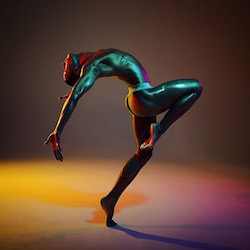
Harper Watters. Photo by Mike Ruiz.
So, what is a typical day like in the life of Harper Watters?
“I typically wake up at around 7:30am to let my dog Roxy out. I’m nothing without a good cup of coffee and breakfast — usually yogurt, granola and berries, or a bagel and some fruit. I like to get to the ballet around 9am to start warming up: pull-ups to wake up the back, crunches for the abs, heat for the lower back, some exercises to target problem areas and then any type of cardio. Class is at 10am, and rehearsals begin at 11:50am. We rehearse until 6:45pm. Depending on the day, I’ll workout after with free weights or just ice and watch Snapchat stories. Dinner is served at around 7:45pm, and unless I’m eating out, it’s pasta with your most basic sauce. If I’m not editing a pre-show or binge-watching my favorite YouTubers, the rest of the night is spent watching high-quality reality TV and scrolling through Instagram.”
You also have a big following on your personal social media. Why is social media important for a dancer to have?
“Dancers are muses. We’re used to telling choreographers’ stories and bringing their vision to life. It’s our job to become other people on stage. We of course incorporate our own personal interpretations, and it’s so fun transforming into different characters every night, but before social media, no one knew the dancers as individuals. When you look in the program, I might be listed as ‘Beauty Cavalier’, but in fact I’m Harper Watters who is obsessed with pop culture, fashion, photography, media and Beyoncé. Sharing what I love has opened so many doors and allowed me to meet creative people I never would have been able to cross paths with. I’ve been so surprised by how positively people have responded to my content. It’s reaffirmed that if you do what you love and do it with complete authenticity to yourself, achieving success is that much sweeter.”
What are your future goals as a dancer?
“My own talk show. I’ve always been chatty, and ballet dancers are some of the most opinionated people you’ll meet. I have a YouTube series called The Pre Show, where it’s just me and the other dancers getting ready for shows. I’d love to develop that more. We’re a unique bunch to say the least, but it’s 100 percent real people who are real working professional ballet dancers. I’m not a huge fan of the mainstream depiction of our world that has taken place over the past few years. I’d love the opportunity to highlight other dancers and their stories and the many characters that make up a ballet company. It’s not as black and white as people think.”
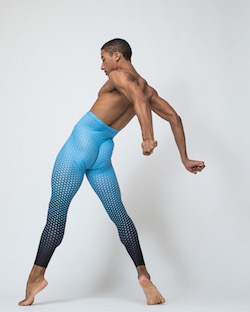
Harper Watters. Photo by Rob Daly.
Do you see yourself moving in to an administrative role once your dance career is complete?
“What’s cool about the position I hold is that I was the first to really create it — Company Ballet Dancer and Social Media PR employee. Houston Ballet and myself have been learning what works and what doesn’t along the way. Social media itself posses the same effect, in that people are now creating these jobs that you initially couldn’t go to school for, but are having extreme practicality and success. I would love to eventually work in PR or communications for the ballet, but I wouldn’t be able to provide the same content because I would no longer be a dancer. I want to keep creating content both for HB and personally that truly shows every aspect of our world. Making people want to watch our shows but also connect with us as people. So whatever job has that title I would be more than happy to hold it after dance.”
What is your favorite role you’ve danced?
“I recently danced Alexander Eckman’s Cacti. Props, rhythm sections, a minute-long improvisation solo, moving lights and intricate choreography…it was unlike any piece I’ve danced. But I was also just promoted after dancing Stanton Welch’s Son of a Chamber Symphony. I was half of one of the principal couples, and I was able to share it dancing alongside someone I trained with in the academy who was also promoted that day. There’s definitely a difference in one’s dancing when you have a little boost of confidence. That feeling and role will always have a special place in my heart.”
What is your dream role?
“My dream roles are the ones that were danced by the dancers who I idolized growing up and made me believe a career in classical ballet was possible. When I saw Eric Underwood dance Wayne McGregor’s Chroma, it instantly was on my bucket list to dance. If I could dance Ulysses Dove’s Red Angels with half the ferocity of Albert Evans, I would be set for life. Jerome Robbins’ Afternoon of a Faun is simply beautiful in its nuanced style, and Craig Hall danced it seamlessly. I’d love to put my stamp on any of those roles.”
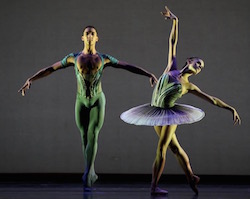
Houston Ballet’s Harper Watters. Photo by Amitava Sarkar.
What is some advice for young aspiring dancers wanting to dance in a company some day?
“My best advice would be what my Artistic Director Stanton Welch once told me in a private coaching rehearsal. While running the variation, I stopped after falling out of a turn. He paused the music, and I was prepared for him to ask what happened with the turn? Instead, the first thing he said to me was, ‘You’re never going to get the perfect wave; what’s more important is how you ride the wave you’re given.’
As dancers, it’s so easy to get lost in the technical aspects of dance, but it will never be perfect. That’s why it’s so important to make your dancing more than the steps. What are you trying to say with the turn? What’s your intention behind turning? Asking yourself these questions elevates your dancing to a new level and transforms you from simply being a dancer into being an artist. There’s only one Harper Watters, and there’s only one you. Focus on how you can make your dancing the best it can be while still being the most authentically you.”
By Allison Gupton of Dance Informa.


